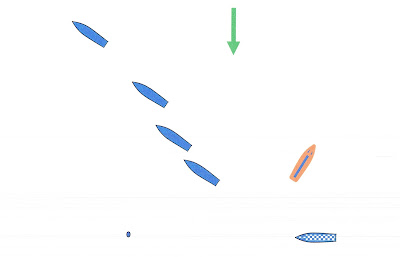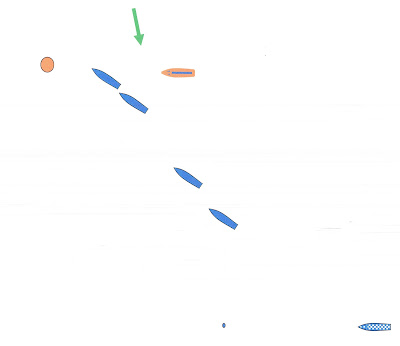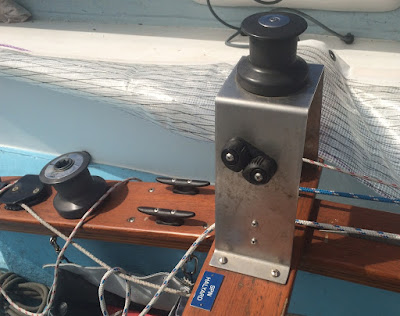We were messing about and got a lousy start. That's us, the orange boat, on port tack. At this point there were nine boats racing and we were ninth. That meant we would get nine points. The interesting thing about racing sailboats is that you get nine points if you come in a close last or a way back dead last.
 |
| It was actually quite a bit worse than this not to scale drawing would indicate. |
We looked up and asked ourselves, "Do you see more wind on the starboard side of the channel? Yes, and less current too." So we decided, "What the hell, we are already last, nine points is nine points lose by a little or lose by a lot--last is last." We stayed on port tack and sailed away from the fleet who were busy covering one another.
We got more wind. Less current. We wanted to tack on the rhumb line but decided to stay high of the mark since the current was running strong. Two of the lead boats tacked to soon and had to make two extra tacks. Then we headed for the mark on starboard tack got a lift. The fleet (now on port tack) got headed.
 |
| A three knot current shoved the early tackers below the mark. We held on longer and then the lift carried us around the mark on a close reach. We made up more time. |
So we turned the corner in fourth place. Then the wind shifted for a dead down wind run to the finish line and we stole enough air from the spinnakers ahead of us to save time on another boat.
Don't get me wrong. It's always better to be out in front covering the competition, but last place can have it's own advantages.










